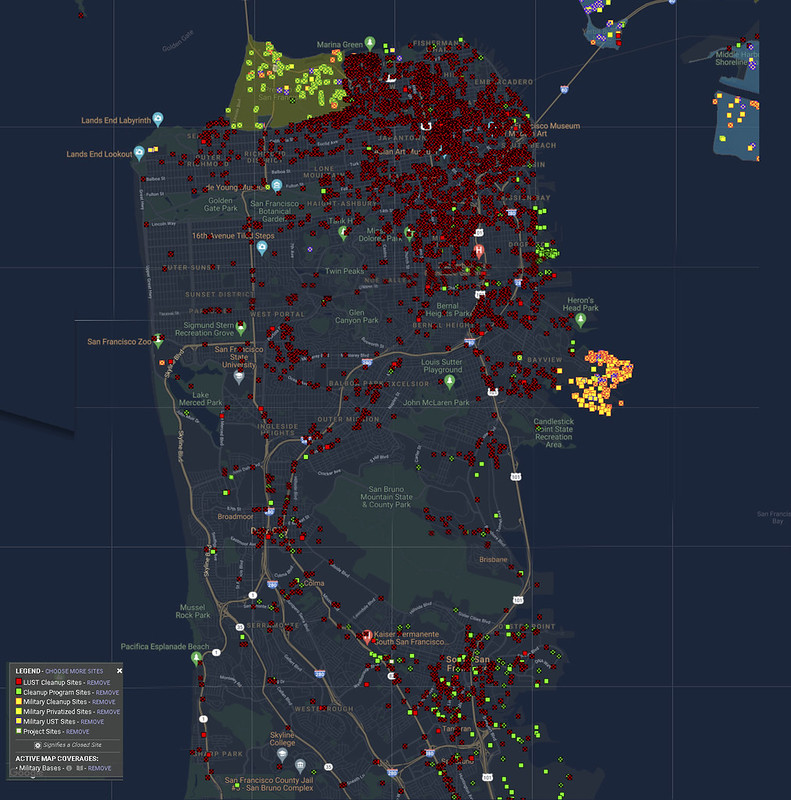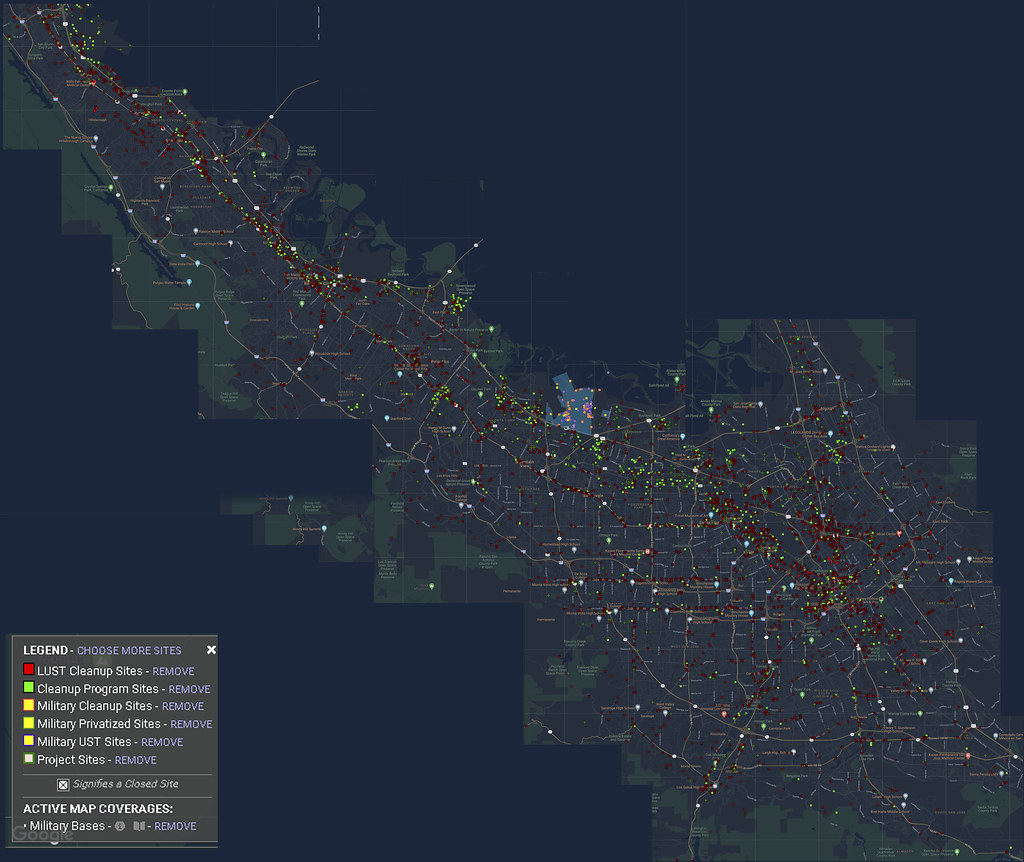San Ramon Nuclear Reactors were being built 10 at a time
US NRC 2021-2022 Information Digest p118 Appendix H
The Nuclear Reactor in San Ramon California is still in operation. This was the site of Aerojet which made nuclear reactors for colleges and research institutions. When they started the nuclear reactor San Ramon had a population of less than 200 people within a mile of the site. Today it is in the middle of the city and the city parks its school busses on the site of one of the radioactive labs. At any one time was building 10 portable nuclear reactors.
It is being active 4 hours in any quarter so they must be doing basic maintenance on the facility and are unable to close the reactor for safety reasons. It could also be a place to store nuclear waste and since the waste containers nationwide do not match with shipping containerrs they cannot remove any nuclear waste. The Savannah River Nuclear Reactor has that problem, tonsof nuclear waste and no way to ship it.

page 114 of 123 in the PDF file
In the above map:
1) An AGN-201 reactor, currently operating at 20 w, used for instrument and dosimeter calibrations and for research work in connection with AGN’s fission-chemistry development programs.
2) A hot cell with high-density concrete walls 20 in. thick. And high-density glass viewing windows, also 20 in. thick, designed to handle specimens up to 300 curies at 1 Mev
3) Chemistry laboratories, including two radiochemical laboratories, two wet chemical laboratories, a sample preparation laboratory, and storerooms
4) A specialized experimental laboratory for AGN’s fission-chemistry programs, used for UO2 slurry circulation, sample vessel assembly, loading, and unloading, safety tests, and sample analysis
5) A metallurgical and material laboratory for evaluation of high temperature materials and nuclear applications of both fueled and unfueled materials
6) A liquid metals Laboratory, including two liquid metal capsule corrosion test facilities, a boiling and condensing heat transfer test facility for space system radiators and boilers, and a dynamic liquid metal corrosion loop test facility
7) An electronics development laboratory
8) A nuclear measurements laboratory with equipment for precision alpha, beta, and gamma counting
The main office building (2) contains engineering and administrative offices, drafting rooms, computer facilities, a document control center, and printing, photographic, and other supporting services. It includes special AEC and DOD restricted area, for work on classified projects.
The shops building (3) includes a general machine shop, a separate bay of 3000 sq ft for welding operations, specialized machine tool areas for the handling of radioactive materials, facilities for the fabrication, assembly, I maintenance, and calibration of instrumentation and electronic equipment, and supporting shop services.
The nuclear fuel fabrication facility (7) is used for ceramic fuel production, sealing and assembly of wire-spaced pins for elements, and preparation of fuel-loaded parts. It is equipped with dust-free assembly rooms, glove boxes, and special equipment for inspection, testing, analysis, and leak detection. Fireproof vaults are provided for storage of plutonium and uranium.
The entire facility is a restricted area, and appropriate accountability and
health physics services are provided.
Other installations on the western side of the railroad tracks include a special radionuclide laboratory (14), cleaning and decontamination facilities, housing for pumps, generators, and air compressors, and special storage facilities for inflammable (5) and hazardous (9) materials.

To the east of the tracks, a new facility (51) for testing power conversion equipment and other rotating machinery was completed this year. The facility includes a high-bay assembly area, control room, test room, and special power sources and testing machinery. The concrete floor slab extends outside the building to provide a base for testing fully-assembled power conversion units for nuclear power plants.
A new physics laboratory (52) was recently completed to accommodate AGN’s expanding research in plasma physics and related fields. The laboratory houses various large magnetic-field power supplies, capacitor banks, vacuum chambers, von Ardenne and other ion sources, an energetic arc, microwave diagnostic equipment, and other special equipment for experimentation and analysis. The building is-300 ft from the site of the proposed AGNIR facility.
A new building (55) for a pulse power research facility is now under construction northeast of the new physics laboratory. The building will provide 650 sq ft of floor space for research and experimentation in the field of pulsed power production.
At the time the area was orchards wih very few people living within range of the site in the case of a nuclear accident. Unfortunately they used the city sewage for the release of radioactive water which would flow downstream through Walnut Hill and then all the way to Suisan Bay and given the safety levels of the times, this was a lot of radiation.
They built portable nuclear reactors for the following entities:
Catholic University of America
Oklahoma State University of Agriculture and Applied Science
University of Akron
Texas A&M
University of Utah
Argonne National Laboratory (AEC)
Colorado State University
University of California Berkeley
University of Delaware
Oregon State University
AGN 201-111 was operated in the commercial exhibit of the 1958 International Conference in Geneva prior to transfer to the University of Geneva
Switzerland (University of Basel)
Italy (University of Palermo)
U. S. Naval Post Graduate School (USN) – melted down but was contained; no explosion
National Naval Medical Center (USN)
William Marsh Rice University
University of Oklahoma
West Virginia University, College of Engineering
Aerojet-General Nucleonics (5 reactors) AGN 201 reactors
Aerojet-General Nucleonics (5 reactors) AGN 211 Reactors
Today the City of San Ramon parks its School Buses on the site. Google Map
The radioactively contaminated water from the site went into the sewer system of San Ramon and gets dumped into Suisun Bay through Walnut Hill. Unfortunately 1950’s standards for radiation were so dangerous that in 1959 they were cut to 1/3 of what they were in 1955 and this put the portable nuclear reactor business under as the effects of radiation became apparent and all of these reactors were emitting at least 7.5 mrems per hour when today the level of safety is 2 mrems per hour. Any amount above that number is a nuclear accident.
They also had issues with meltdowns and explosions. The Santa Susana reactors near Simi Valley built for NASA spacecraft and for satellites had three nuclear reactors melt down and at least one of them exploded making it the worst nuclear reactor disaster on record. People think Three Mile Island was bad, the reactor exploded and a radioactive cloud of Strontium 90 spread over the valley from the site into Simi Valley and across the hills to Los Angeles County to the River.

Ruzich, K. C.., Sturm, W. J.. Hazard Summary Report for the Argonne AGN-201 Reactor. United States: Argonne National Laboratory, 1962.
































You must be logged in to post a comment.